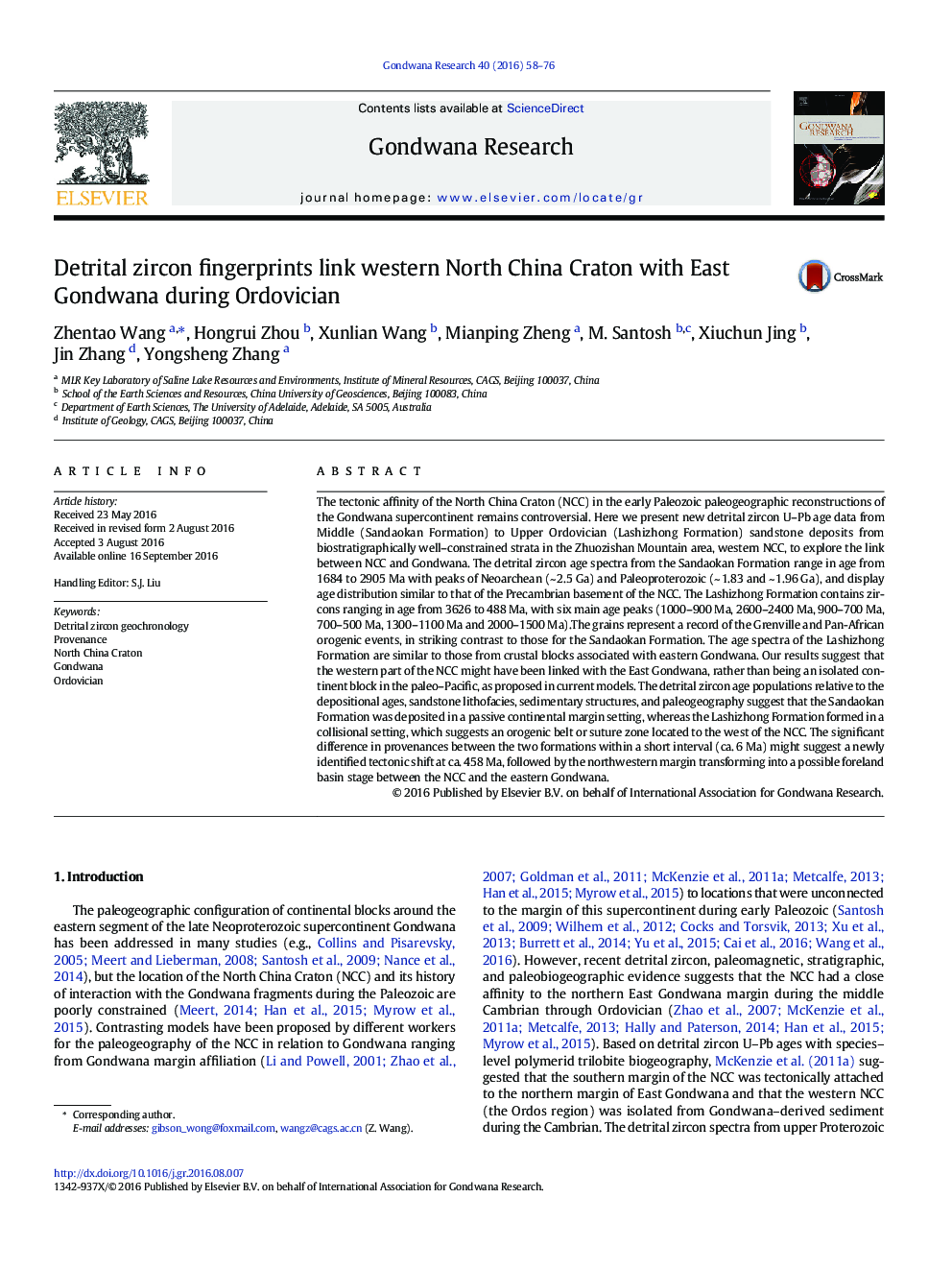| کد مقاله | کد نشریه | سال انتشار | مقاله انگلیسی | نسخه تمام متن |
|---|---|---|---|---|
| 4726544 | 1640131 | 2016 | 19 صفحه PDF | دانلود رایگان |
• Linking western North China Craton with the East Gondwana in Late Ordovician.
• The Middle Ordovician detritus derived from the basement of NCC.
• The Upper Ordovician sediments sourced from the eastern Gondwana.
• A prominent tectonic shift on the western margin of the NCC at ca. 458 Ma
• A foreland basin between the western NCC and eastern Gondwana at ca. 458 Ma.
The tectonic affinity of the North China Craton (NCC) in the early Paleozoic paleogeographic reconstructions of the Gondwana supercontinent remains controversial. Here we present new detrital zircon U–Pb age data from Middle (Sandaokan Formation) to Upper Ordovician (Lashizhong Formation) sandstone deposits from biostratigraphically well–constrained strata in the Zhuozishan Mountain area, western NCC, to explore the link between NCC and Gondwana. The detrital zircon age spectra from the Sandaokan Formation range in age from 1684 to 2905 Ma with peaks of Neoarchean (~ 2.5 Ga) and Paleoproterozoic (~ 1.83 and ~ 1.96 Ga), and display age distribution similar to that of the Precambrian basement of the NCC. The Lashizhong Formation contains zircons ranging in age from 3626 to 488 Ma, with six main age peaks (1000–900 Ma, 2600–2400 Ma, 900–700 Ma, 700–500 Ma, 1300–1100 Ma and 2000–1500 Ma).The grains represent a record of the Grenville and Pan-African orogenic events, in striking contrast to those for the Sandaokan Formation. The age spectra of the Lashizhong Formation are similar to those from crustal blocks associated with eastern Gondwana. Our results suggest that the western part of the NCC might have been linked with the East Gondwana, rather than being an isolated continent block in the paleo–Pacific, as proposed in current models. The detrital zircon age populations relative to the depositional ages, sandstone lithofacies, sedimentary structures, and paleogeography suggest that the Sandaokan Formation was deposited in a passive continental margin setting, whereas the Lashizhong Formation formed in a collisional setting, which suggests an orogenic belt or suture zone located to the west of the NCC. The significant difference in provenances between the two formations within a short interval (ca. 6 Ma) might suggest a newly identified tectonic shift at ca. 458 Ma, followed by the northwestern margin transforming into a possible foreland basin stage between the NCC and the eastern Gondwana.
Figure optionsDownload as PowerPoint slide
Journal: Gondwana Research - Volume 40, December 2016, Pages 58–76
